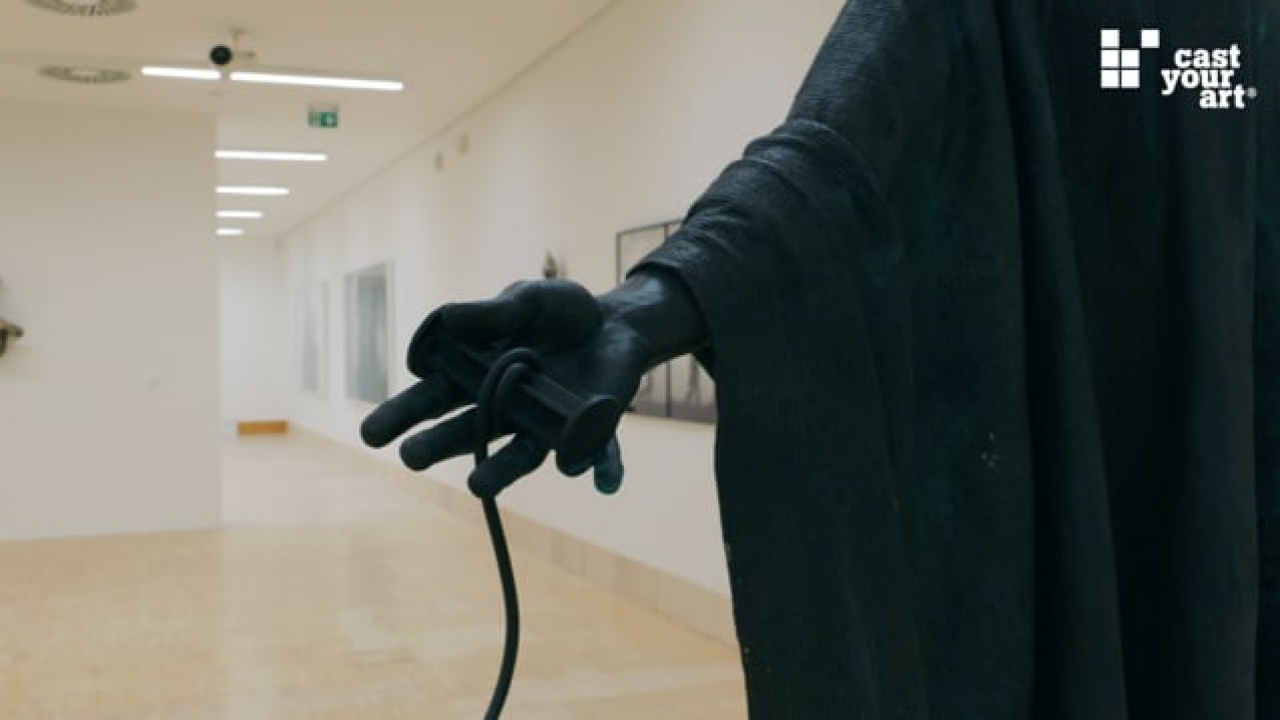Maria Lassnig - The Ninth Decade
Maria Lassnig: “Soft as marmalade, marmalade out of blood I’m batted and feel hindered and left locked out from the world of painting.”
“There was a saying, if a boy is born, parents drink a schnapps, but if it is a girl they would only celebrate with water or even less ... nothing”, recollects Maria Lassnig in one of her recently numerous interviews
Born in 1919 she started to scribble her first artworks at a very young age. Once her mother even seeked the help of a fortune teller because her little girl was holding her hands in such a crooked way while drawing, that she looked like a fool. Although her mother was told to support her daughter, her only thought was to get her married to a decent man to keep her out of harm’s way.
But Life had different plans for her. As a young woman she decided to make a living out of painting. Between 1941 and 1943 Maria Lassnig studied at the academy of fine arts in Vienna. Later on she lived in Paris and New York. While living in the United States she started making animated films because her paintings were not understood. In the year 1980 she accepted a teaching position at the University for applied arts in Vienna. She was the first female professor for Painting at an academy in the German speaking world. Between 1982 and 1997 her works were shown at the documenta in Kassel. In the year 1988 she receives the Austrian State Art Prize and in 2004 she was awarded with the Max-Beckmann prize of the city of Frankfurt.
In the last couple of years the work of Maria Lassnig drew more and more attention. Hans Ulrich Obrist curated an exhibition of her work at the Serpentine Gallery in London, the critics deemed her to be the discovery of the century, the “grand dame” of the European painting. In 2009 the Vienna Museum of Modern Art hosted the exhibition “Maria Lassnig. The Ninth Decade." Lassnig wasn’t entirely happy with the title “The Ninth Decade” because it made her sound like an old woman. She perceives herself as becoming smarter and more beautiful from day to day. In her diaries published by DuMont Lassnig describes death as a cruel unfair ending, this human fate unnecessarily destroys a beautiful building, which shines on the top. Looking at her recent work, one can understand this statement.
Maria Lassnig stands for those rare examples in art history, where hard work transforms knowledge and experience into a playful exploration. On many occasions she quotes that she does not have a clear vision when she takes a brush into her hand. The central theme of her work evolves around the illustration of the human body. In her “body awareness paintings” as Lassnig describes it, she extends the physical appearance of the body through the dimension of sensation.
Although she points out that she does not represent a feminist agenda, her drawings and self-portraits reflect on the female position in society nevertheless with a certain level of irony. In her work the “country girl” Lassnig portraits a mature woman who hangs on to a small scooter while her breasts seem to lose the battle with gravity. As if she would say, take the “shooter” but leave me the scooter.
In her work Lassnig consequently tries to rethink conventional positions, to develop new perspectives and to present things in a new context. She writes in her diaries: “Oh those artists who are trapped in their style, who look frustrated at the world, who are obsessed with success; they should modify their style, change it every week, think their standards over, change their hair color, their wig everyday, vary their preconceived opinion about politics, about the person next to them”. (jk/fls)
Das könnte Sie auch interessieren

FLORENTINA PAKOSTA. A Retrospective at Albertina Museum
27. June 2018
MARKUS HANAKAM & ROSWITHA SCHULLER. The Water Cabinet
11. March 2025
BENJAMIN BURKHARD. Zwischen Schönheit und Entropie
26. September 2025
PETER PONGRATZ. Feine Salonkunst für das bürgerliche Wohnzimmer.
10. October 2021
CONSTANTIN LUSER. Why Drawing Now, im Albertina Museum
11. November 2015
THE WOUNDED WORLD. When life leaves its traces as scars.
22. April 2024
Michael Scheirl – Typologies of the Invisible
27. December 2014
